THE ALL-NEW AUDI RS 3 SEDAN and RS 3 Sportback, contemporary legends of the premium compact performance car segment, will bring more torque, heightened driving dynamics, a striking new design and a raft of innovative features to set them further apart from its predecessor, and their competitors.
“The predecessor to the all-new RS 3 Sedan and RS 3 Sportback enjoyed incredible popularity in Australia since first arrival in 2015,” said Paul Sansom, Managing Director of Audi Australia.
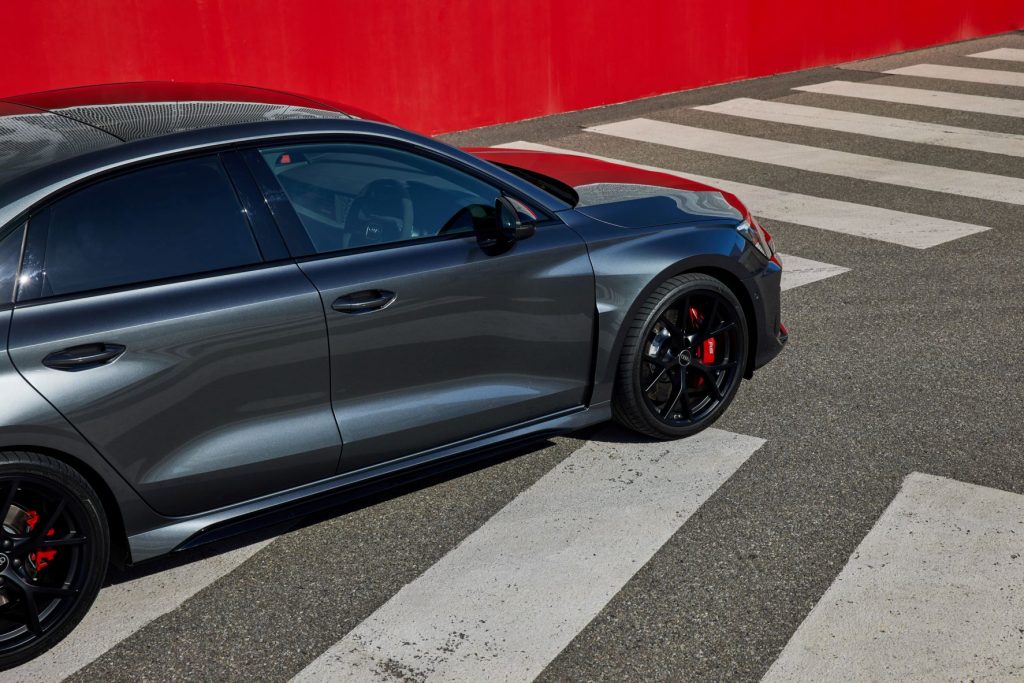
“The unique combination of looks, driving performance and of course, that iconic Audi five-cylinder engine, proved to hit a real sweet-spot with Australian performance car buyers. Incredibly, for many months throughout its lifetime, more than every fourth A3 vehicle we delivered was an RS 3 Sedan or Sportback.
“Obviously we’re delighted to bring the all-new RS 3 to Australia in anticipation of meeting increased customer demand. With all of its advancements, particularly in terms of driving dynamics, the all-new RS 3 is sure to go down in history as the ultimate performance car in its segment,” said Sansom.
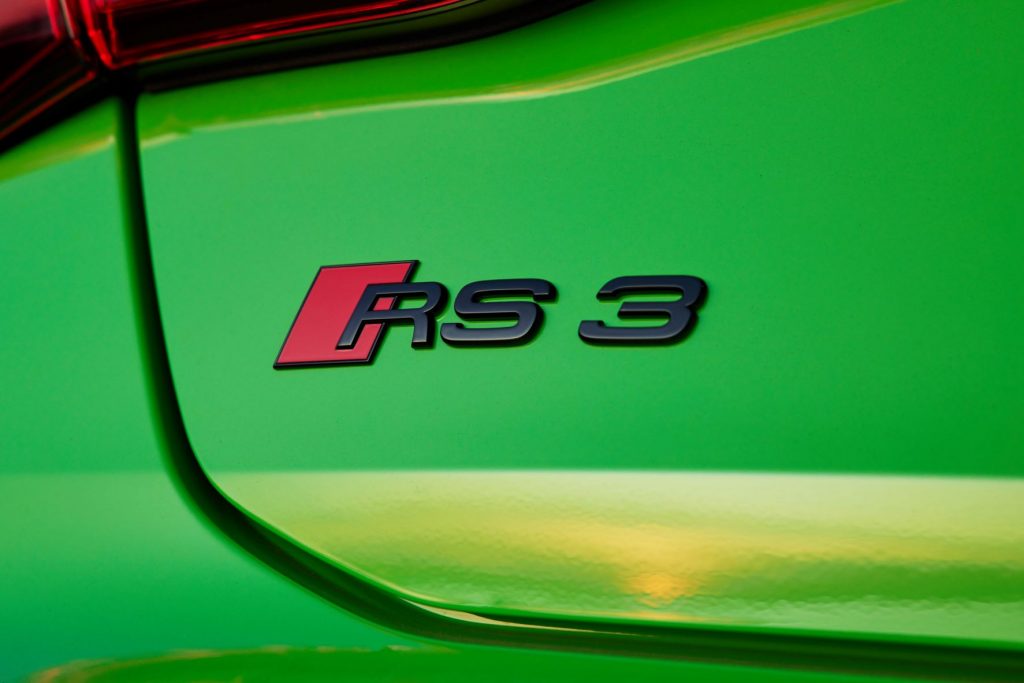
The iconic 2.5 TFSI engine: unmatched acceleration
With its five-cylinder, high-performance engine, the Audi RS 3 is one-of-a-kind in the segment. The 2.5 TFSI has won the “International Engine of the Year” award nine times in a row. In the latest generation of the compact sports car, the engine is now more powerful than ever before. This is mainly due to the increased torque of 500Nm – 20Nm more than in the predecessor. It ranges from 2250 and 5600 rpm. The new RS 3 models reach the broad power plateau, which extends to 7000 rpm, from as low as 5600 rpm. Boasting 294kW of power, they sprint from 0 to 100 km/h in 3.8 seconds thanks to Launch Control – three tenths of a second faster than before. In the ADR81/02 testing cycle, the RS 3 Sedan and RS 3 Sportback consume 8.2 and 8.3L/100km respectively. CO2 emissions are 188 and 190g/km respectively.
The award-winning five-cylinder engine is orchestrated by a new exhaust system. For the first time in an RS 3, it features a fully variable flap control system that supports intermediate positions, thus broadening the sound characteristics even further. The differences can be experienced in the various modes offered by the Audi drive select dynamic handling system. In the dynamic and RS Performance modes, for example, the flaps open much earlier – the emotional elements of the sound are even more pronounced. The standard RS sports exhaust system brings out the unmistakable sound of the five-cylinder engine even more clearly.
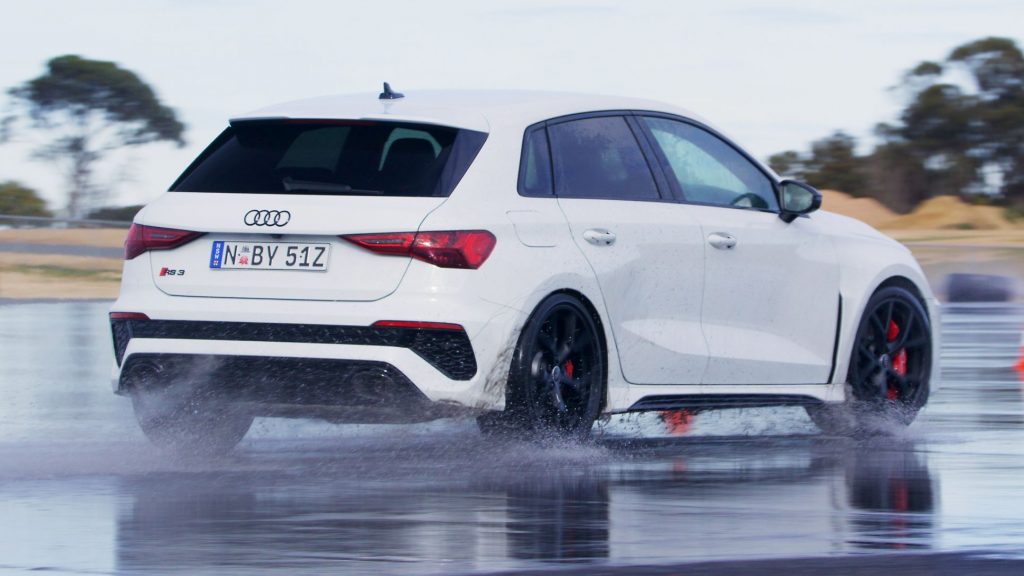
The new RS torque splitter for maximum agility
The RS torque splitter, installed for the first time in an Audi, makes the driving experience even more exhilarating and provides a dynamic balance. It replaces the previous rear axle differential with an upstream multiple disc clutch package. Instead, an electronically controlled multiple disc clutch is used on each of the drive shafts that distributes torque between the rear wheels in a fully variable manner. This results in even greater stability and agility. During dynamic driving, the torque splitter increases torque delivered to the outer rear wheel with the higher wheel load, which significantly reduces the tendency to understeer. In left-hand corners, it transmits the drive torque to the right rear wheel, in right-hand corners to the left rear wheel, and when driving straight ahead, to both wheels. The difference in propulsive forces means that the new RS 3 turns into curves even better and follows the steering angle more precisely – especially when cornering at high speeds.
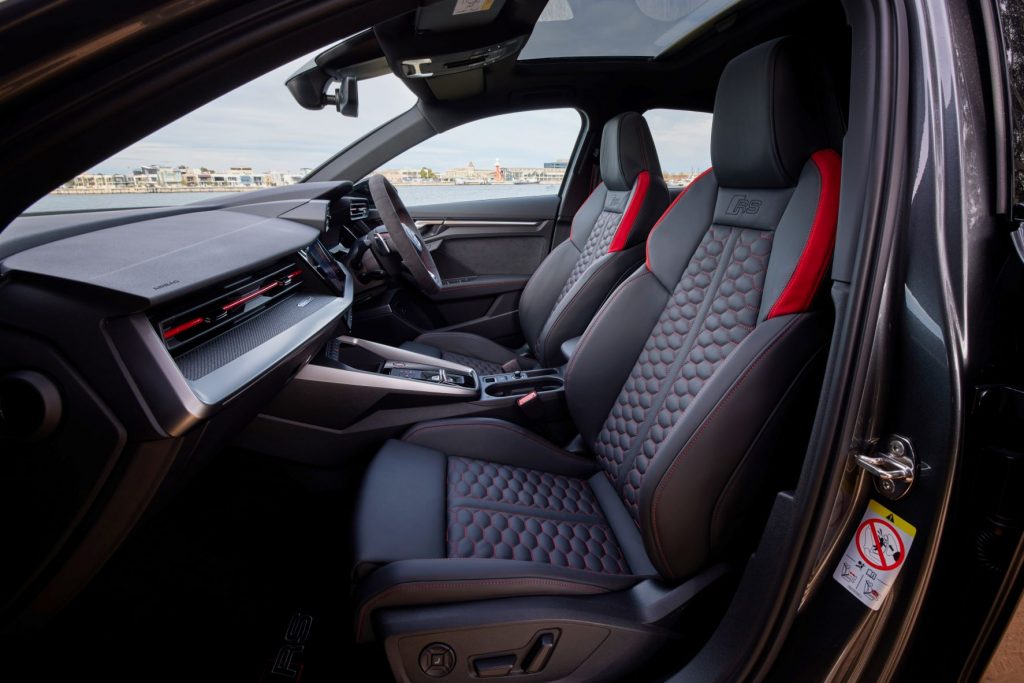
The new RS Performance mode specific to the RS 3 is designed specifically for the racetrack with its own engine and transmission setup and specially calibrated to the Pirelli P Zero “Trofeo R” semi-slick tires, which are optionally available. The torque splitter ensures the most neutral handling possible with little oversteering or understeering in different driving situations. This makes early acceleration possible upon exiting a curve, enabling faster lap times.
Another new addition is the RS Torque Rear mode, which makes drifting possible. It is designed for use on closed roads. In this mode, the torque splitter transmits up to 100 percent of the engine power to just one of the rear wheels – up to a maximum of 1750 Nm of torque. The models also come with efficiency, comfort, auto, and dynamic modes, as well as RS Individual, which allows the systems to be set individually.
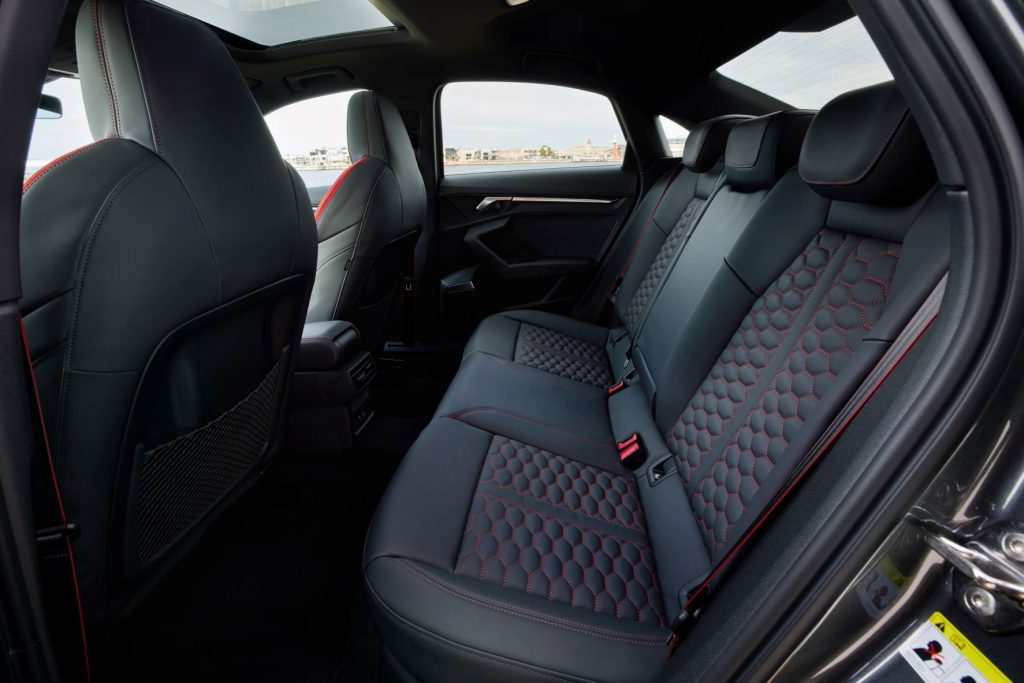
In the all-new RS 3 Sedan and RS 3 Sportback, adaptive damper control supersedes the magnetic ride control of its predecessor. With adaptive dampers, sensors measure the movements of the vehicle body. The pistons within the dampers contain solenoid valves that offer very energy-efficient control, allowing hydraulic fluid to flow faster or slower as required. The damping characteristics are adjusted accordingly to the road surface conditions and the driving situation. This results in enhanced driving dynamics with even more comfort. The driver can choose between several suspension settings in the Audi drive select system.
Audi drive select has an effect on the engine and transmission characteristics, the torque splitter, steering assistance, the adaptive dampers, and the exhaust flaps. This creates a broad range of driving experiences – from an emphasis on comfort, to highly dynamic settings for the racetrack.
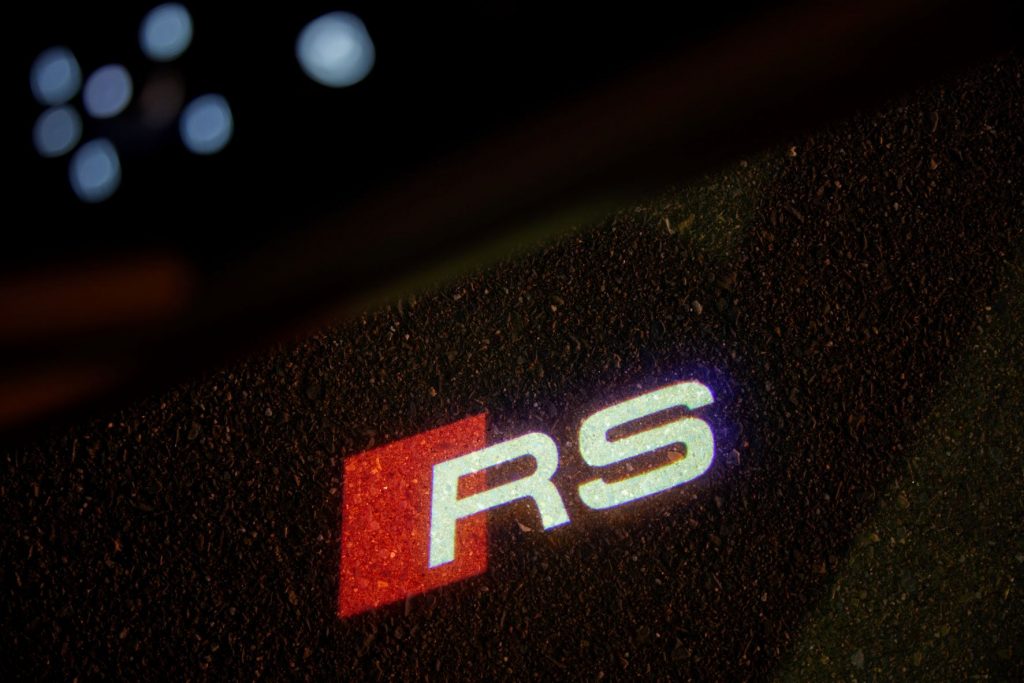
Exterior and lighting: expressive and unmistakable
The design of the new Audi RS 3 is even more dynamic and powerful than that of its predecessor. In the front, the wide RS bumper, the redesigned Singleframe with its distinctive honeycomb grille, and the large air intakes give the compact sports car an expressive appearance. Behind the flared fenders, a slightly protruding air outlet creates a motorsport look. The front axle track has been widened by 33mm. At the rear axle, the new RS 3 Sportback has added 10mm.
The RS 3 comes standard-equipped with flat, V-shaped matrix LED headlights, with dynamic turning lights and darkened bezels that feature digital daytime running lights around their outer downturned angles. With its pixel field of 3 x 5 LED segments, it provides an unmistakable look – when the vehicle is opened, the RS 3 lettering appears on the driver’s side and a chequered flag appears in the pixel field of the other headlight, creating a dynamic scene. When driving, the chequered flag lights up on both sides.
Audi Sport delivers the RS 3 with 19-inch cast alloy wheels in a 5-spoke Y-style design, with RS branding. The motorsports-inspired finishing touches include the redesigned RS-specific rear bumper with built-in diffuser and the RS exhaust system with a large oval tailpipe on both the left and right side. Some exterior peripherals, such as the mirror caps, the inserts in the rocker panels, and the tailgate and roof edge spoilers, are available as an option in carbon-fibre-reinforced plastic for an even sportier look. A total of eight exterior colours are available for the models, including the RS-specific Kyalami Green and Kemora Gray finishes.
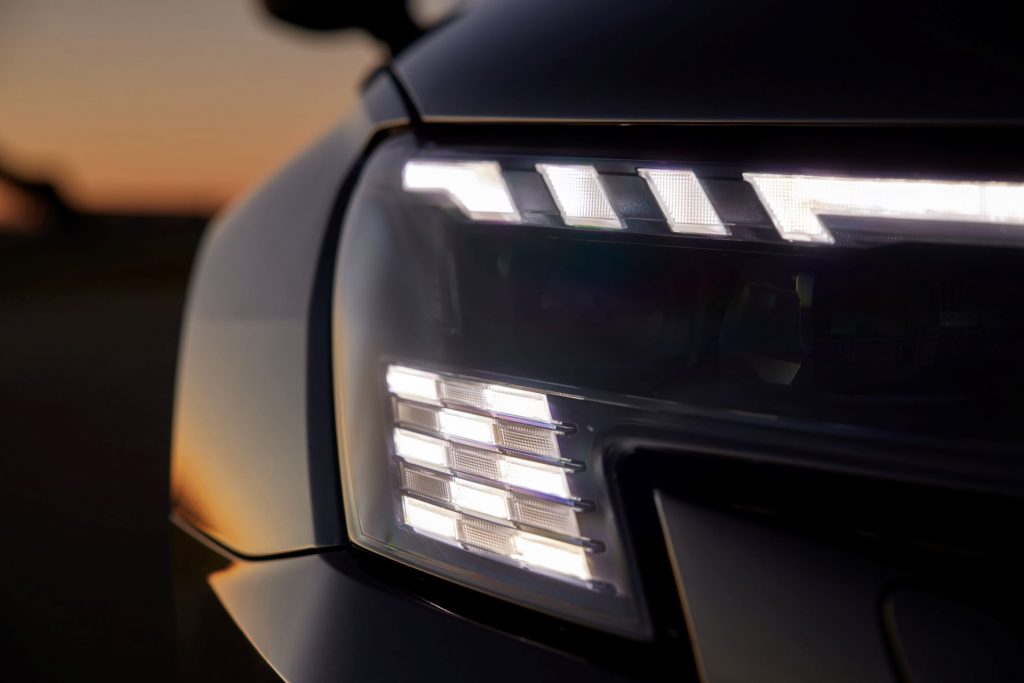
Driving dynamics made visible: the interior
In the interior, too, many elements specific to the RS accentuate its sportiness. The standard-equipped 12.3-inch Audi virtual cockpit displays the revolutions per minute in the ‘RS Runway’ design. In this case, the values are displayed in the opposite direction in a manner that visually resembles an airplane runway – the highest number of revolutions in the foreground and the lowest in the background. In addition, the Audi virtual cockpit plus includes displays for g-forces, lap times, and acceleration from 0 – 100 km/h, 0 – 200 km/h, quarter mile, and eighth of a mile.
The RS-specific blinking shift indicator in manual transmission mode changes the rpm display from green to yellow to red, blinking in a manner identical to that used in motorsports, to indicate the ideal time to change gears. It is also integrated into the head-up display, which is available for the first time in an A3 model, that projects relevant information onto the windshield in the driver’s direct line of sight. The 10.1-inch touch display in the instrument panel also displays the coolant, engine, and transmission oil temperatures, as well as the g-forces and the tyre pressures.
The expressive look is enhanced by the carbon-fibre trim in the instrument panel and RS sport seats with RS embossing and contrast stitching. The seat upholstery is in fine Nappa leather with RS honeycomb stitching, available in glossy black, Express red, or, for the first time, Micrommata green contrast stitching. The RS design package plus is also available, with the seat shoulders and the accents around the air vents also coming in matching red or green. They include special floor mats with contrast stitching and RS embroidery, Alcantara steering wheel, as well as seatbelts with matching coloured edges.
More equipment
The RS 3 Sedan and Sportback exceed expectations of high equipment levels, with almost $10,000 worth (Audi figures) of additional standard features compared to its popular predecessor.
Some highlights include metallic or pearl effect paint, electronically opening and closing boot (Sportback), as well as heated, folding and dimming exterior mirrors with memory. Inside, wireless Apple CarPlay is a welcome addition, as is the Head-up display. Electric front seats with 4-way lumbar support and memory function ensure comfort matches the driving scenario at all times, while colour ambient lighting provides a sophisticated cabin character. The folding rear seat backrest (40:20:40) ensures that the new RS 3 is as fit for domestic duties as it is for the racetrack.
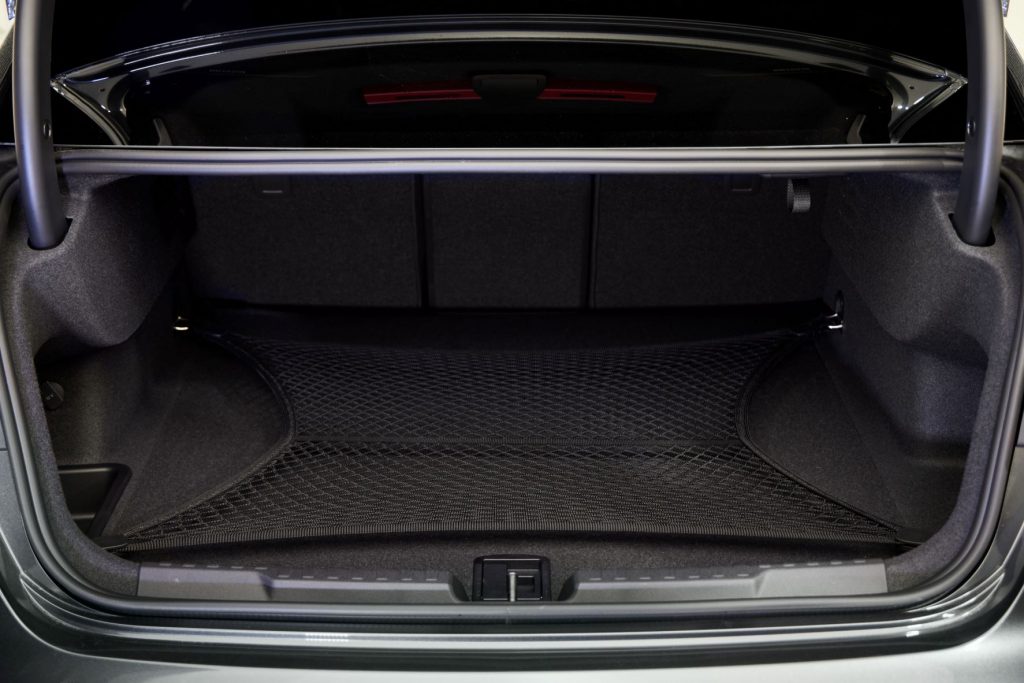
Safety a high priority
As with all Audi vehicles, an abundance of safety features is an asset for every driver’s confidence. In addition to the standard equipment of its predecessor, the new RS 3 Sedan and RS 3 Sportback gain exit warning with rear cross traffic alert, as well as Audi pre sense basic (seat belt pre-tensioning, window and sunroof closure in emergency situations). Audi park assist and 360 degree cameras make the most intricate of urban environments a breeze.
Peace-of-mind for owners
Like all new Audi vehicles delivered to Australian customers from January 1 2022, the all-new RS 3 Sedan and RS 3 Sportback also come with the peace-of-mind of a five-year warranty. Audi also provides a 12-year manufacturer warranty for bodywork against corrosion perforation for new vehicle.
Five-year service plans can be purchased at any time during the first 12 months of ownership of a new Audi vehicle, for a cost of $3580. Two-year Audi Advantage packages can be purchased in addition, including full factory warranty, 2 years of scheduled servicing and 2 years of roadside assistance beyond the initial warranty period for a cost of $3800. These packages can be purchased back-to-back, giving owners the option to include the cost of warranty, servicing and roadside assistance for up to nine years at the time of purchase.
Available packages
Four option packages will be available at launch: Carbon package, Matte aluminium styling package, RS design package plus and RS dynamic package plus. The all-new Audi RS 3 Sedan and RS 3 Sportback are also offered with the comprehensive five-year service plan package, priced at $3580.
Market introduction
The all-new Audi RS 3 Sedan and RS 3 Sportback are available in Audi dealers now.
Pricing (all plus on road costs)
| RS 3 Sportback | 294kW | $91,391 |
| RS 3 Sedan | 294kW | $93,891 |
